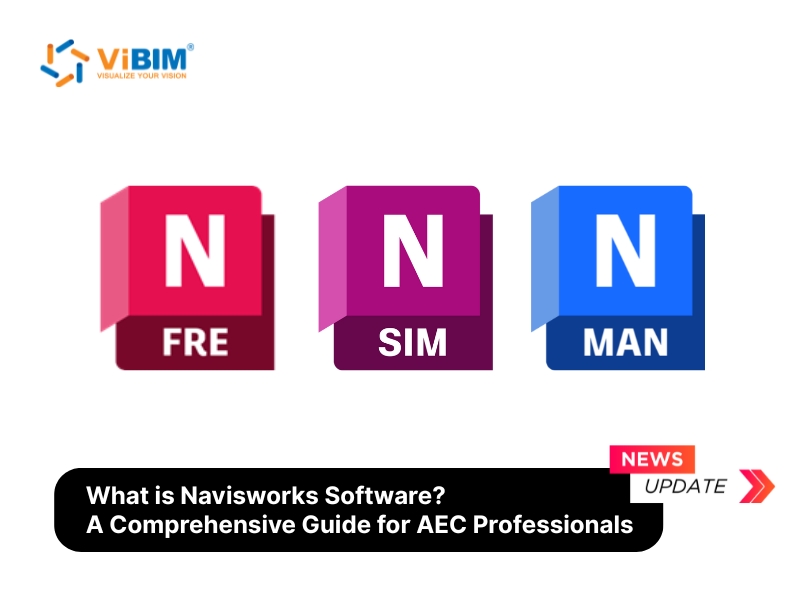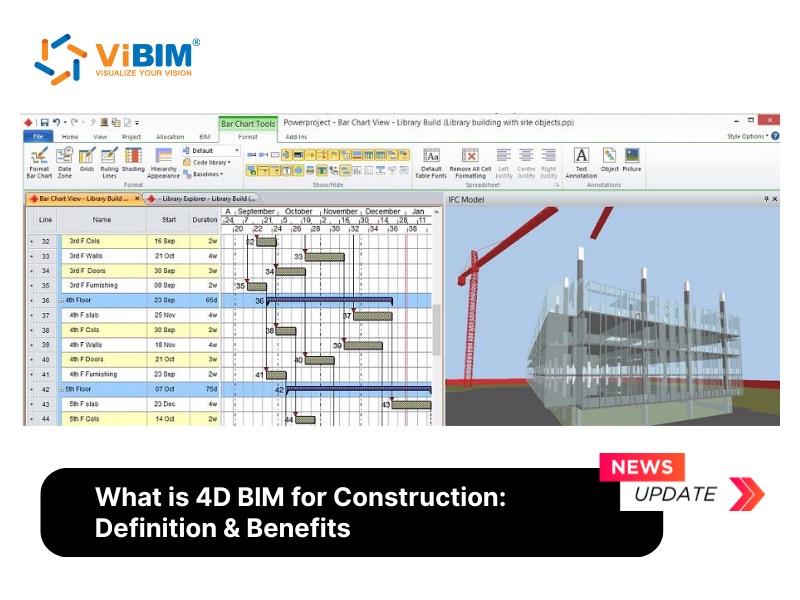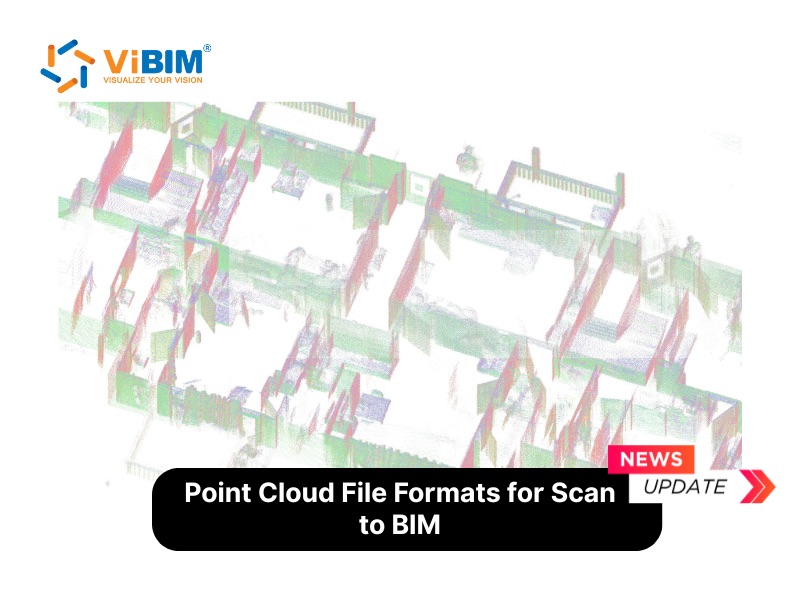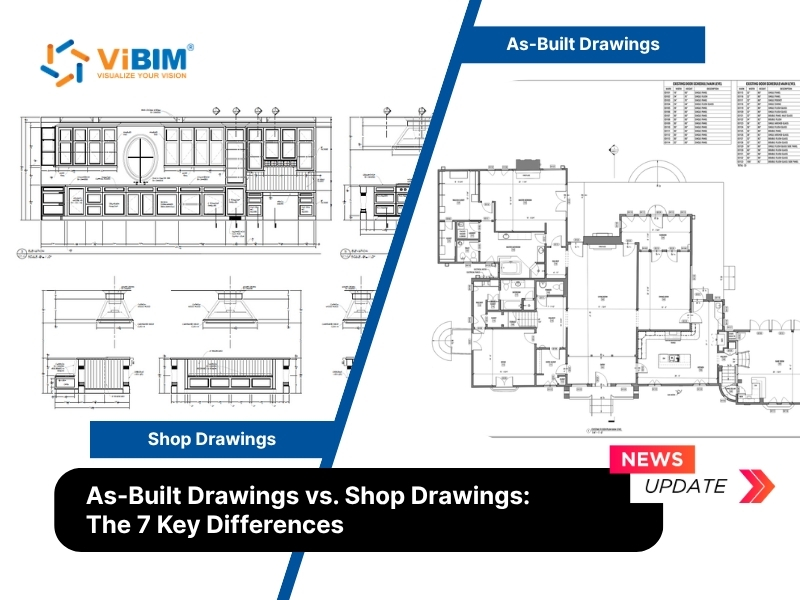BIM maturity levels represent the extent to which Building Information Modeling (BIM) is adopted and utilized within a project or organization. This structured progression outlines the degree of sophistication in collaboration, data management, and technology adoption within the Architecture, Engineering, and Construction (AEC) industry. Moving through these levels signifies a shift from traditional, fragmented workflows to highly integrated, data-rich processes that enhance efficiency, reduce errors, and improve project outcomes across the entire lifecycle of a built asset.
This article will explain each of the four primary levels of BIM maturity (0, 1, 2, and 3), providing a clear roadmap for assessing and advancing your capabilities. We will also clarify the crucial role of the modern ISO 19650 international standard in this framework and detail the significant benefits of increasing your organization’s BIM maturity.
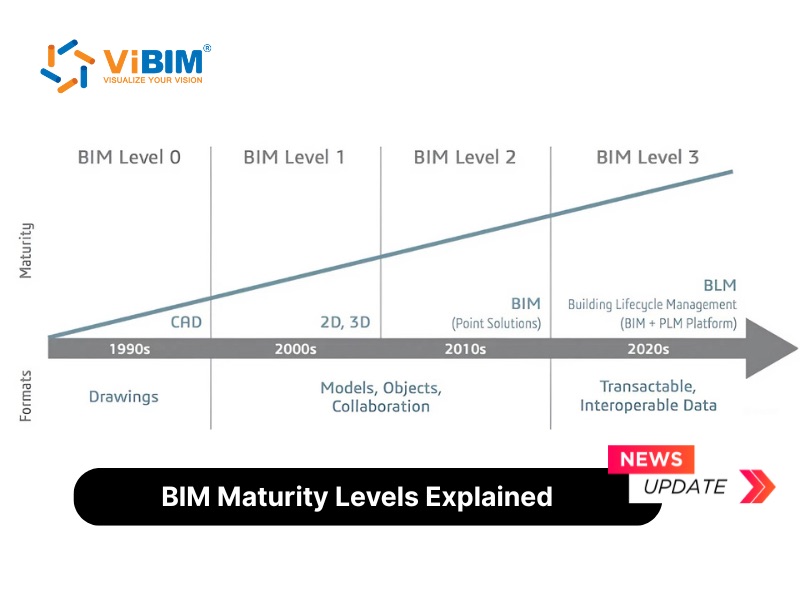
What are BIM Maturity Levels?
BIM Maturity Levels represent the extent of collaboration and data integration in a project, organization, or the construction industry, providing a standardized benchmark for evaluating the effectiveness of BIM implementation. This framework provides a clear roadmap for technology adoption and process improvement, with levels ranging from 0 to 3. Each level signifies a progressive step towards achieving complete collaboration and the seamless integration of all project elements and stakeholders.
The key components that define BIM maturity include:
- Collaboration: The degree to which project teams work together and share information. This evolves from no collaboration at Level 0 to real-time, integrated collaboration at Level 3.
- Data Management: The method of storing, sharing, and managing project information. This progresses from unstructured, individual files to a centralized, single source of truth.
- Lifecycle Integration: This defines the level at which BIM data is integrated across the different stages of the building’s lifecycle, from design and construction through to operation and maintenance.
The relevancy of this model grew exponentially in 2011 when the UK’s “Government Construction Strategy” made it mandatory for all centrally procured public projects to comply with BIM Level 2 by April 2016. This government initiative was designed to drive widespread BIM adoption, aiming to increase the efficiency, collaboration, and data management of construction projects to make them more time- and cost-effective.
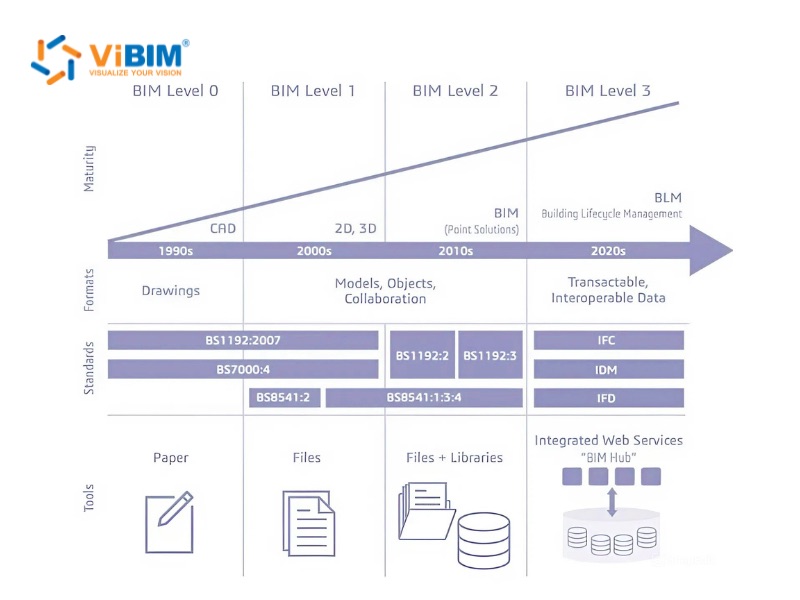
The Four Main Levels of BIM Maturity
The widely recognized framework for BIM maturity consists of four distinct levels, from Level 0 to Level 3. Each level represents a significant step forward in technological capability and collaborative methodology.
BIM Level 0: No Collaboration
BIM Level 0 is the most basic stage and is characterized by a complete lack of collaboration. At this stage, workflows are entirely 2D and rely on traditional paper-based or electronic prints. The primary tool is Computer-Aided Design (CAD) software, but its output is limited to static drawings without any associated data or intelligence. Information is exchanged through printed documents or digital files like PDFs and DWGs, leading to a high risk of data loss and misinterpretation between disciplines.
The main limitation of remaining at Level 0 is the inherent inefficiency. With no shared model or standardized process, design conflicts, errors, and omissions are common, often leading to costly rework, project delays, and disputes.
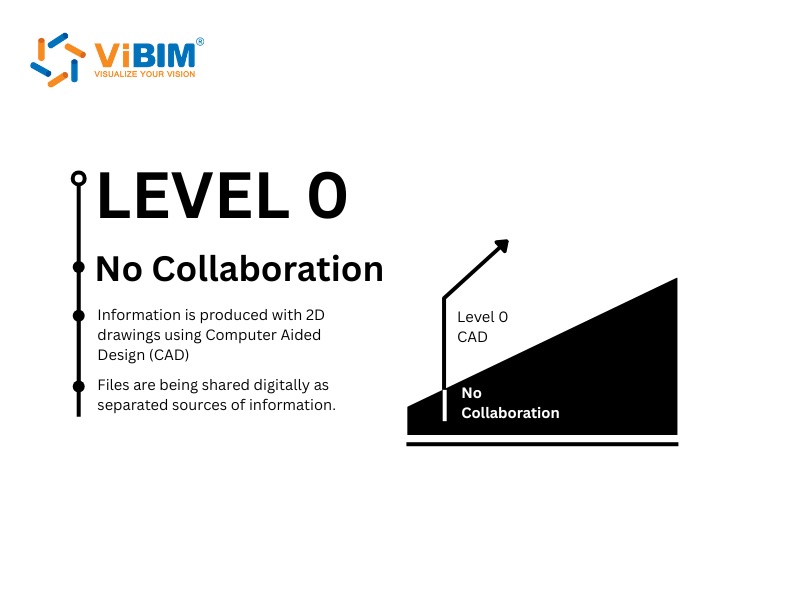
BIM Level 1: Partial Collaboration
BIM Level involves a mix of 2D and 3D work, this level introduces a more structured approach to data management through a Common Data Environment (CDE). A CDE is a shared online repository where all project stakeholders can store, access, and manage their information. Although each discipline creates its own separate models, the CDE ensures that everyone is working from the most up-to-date information, reducing the risk of errors. Standardized data structures and naming conventions, such as those outlined in British Standard 1192, become essential for maintaining order.
The benefits of achieving Level 1 are immediate. It improves coordination between teams, reduces the amount of rework, and creates a more organized and accessible project record.
| Role | Responsibilities at Level 1 |
| Architect | Creates and manages 3D models for conceptual design and visualization. Produces 2D drawings for documentation. |
| Engineer | Develops discipline-specific 2D drawings and potentially some 3D models for analysis. |
| Contractor | Manages the Common Data Environment (CDE) and coordinates the sharing of electronic files. |
| Project Manager | Ensures adherence to standardized naming conventions and data structures within the CDE. |
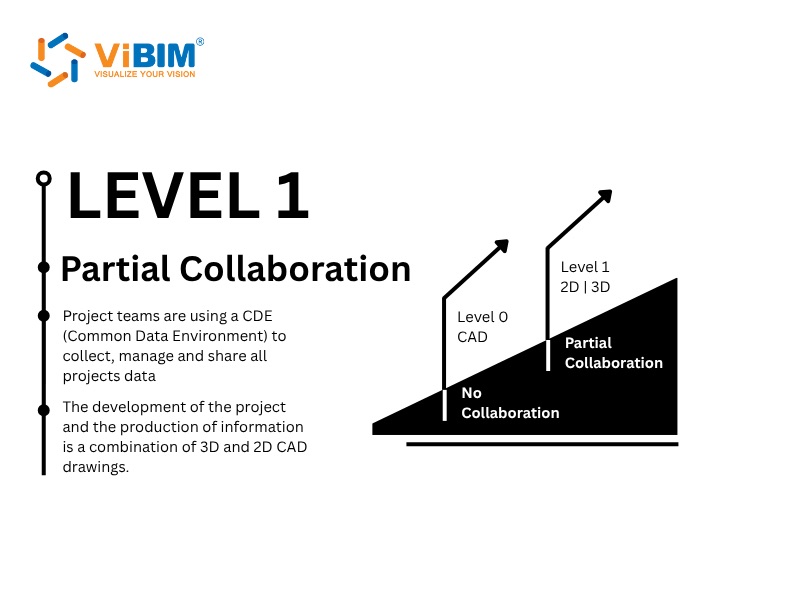
BIM Level 2: Full Collaboration
BIM Level 2 is defined by full collaboration between all project parties. While each discipline still maintains its own distinct 3D model, these models are combined into a “federated” model within the CDE. This federated model allows for comprehensive clash detection and design review, as all components can be viewed in a single, coordinated environment. The key to Level 2 is the seamless exchange of information using open, non-proprietary file formats like Industry Foundation Classes (IFC) and Construction Operations Building Information Exchange (COBie).
A critical component of this level is the BIM Execution Plan (BEP), a document that outlines the project’s BIM goals, standards, and protocols, ensuring all team members are aligned. Achieving Level 2 compliance, which was mandated for all UK government projects by 2016 under the PAS 1192-2 standard (now part of the ISO 19650 series), requires not just the right software but also robust processes and trained personnel.
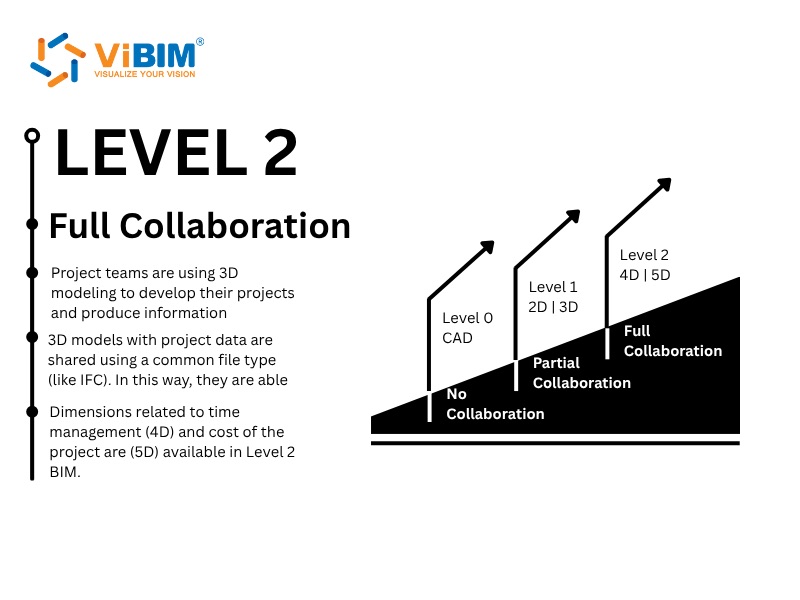
BIM Level 3: Full Integration
BIM Level 3 represents the ultimate goal of the BIM maturity journey: full integration. This is the most advanced stage of BIM maturity, where all teams work simultaneously online within the same shared model. To better understand this, imagine working on a report in Google Docs, where multiple people can access and edit the document at the same time. At Level 3, a single, shared project model is held in a centralized repository, typically a cloud-based database, allowing all parties to access and modify the same model. This level of real-time accessibility eliminates the final layer of risk associated with conflicting or outdated data, ensuring projects are managed more effectively and productively.
This full integration is achieved by combining cloud-based platforms, open data standards (like IFC), and potentially Internet of Things (IoT) and automation technologies into the BIM process. It allows for real-time data capture and exchange across every aspect of the project.
Furthermore, BIM Level 3 is where the model is fully integrated into the entire project lifecycle, from initial design through to long-term operation and maintenance. The information-rich model becomes a vital asset for facility managers, who can use the data to plan for future maintenance, schedule upgrades, or make decisions to improve the building’s energy efficiency. By removing the barriers of information sharing through complete interoperability, Level 3 BIM connects the entire construction supply chain by integrating higher data dimensions like 6D (sustainability) and 7D (facility management), with a clear focus on the building’s whole lifecycle.
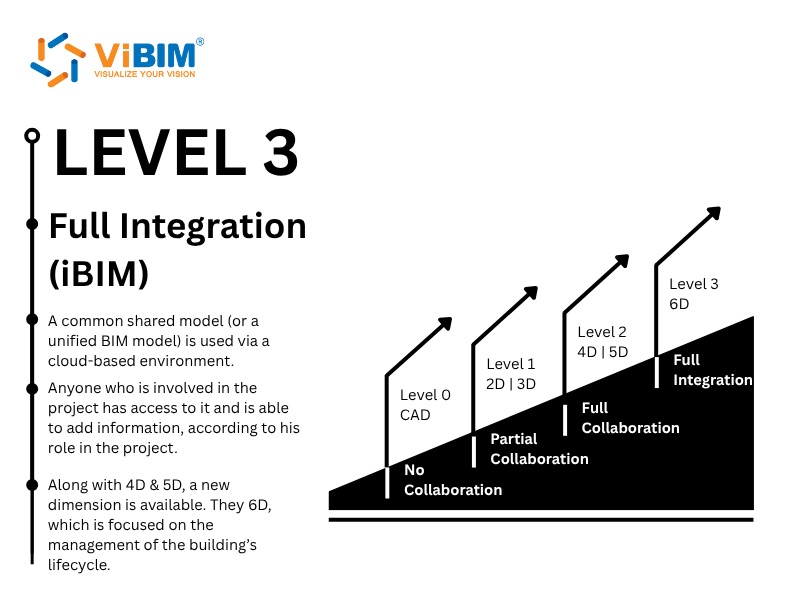
How to Achieve Higher BIM Maturity Levels
The path to advanced BIM maturity is constantly being redefined as digital tools, interoperability, and data-driven methodologies evolve. In 2025 and beyond, organizations aiming for higher BIM maturity should address not only foundational practices but also leverage new technologies and collaborative trends that are reshaping the digital built environment.
Here are practical, updated steps to elevate your organization’s BIM capabilities:
- Invest in Continuous Education and Upskilling: A knowledgeable team is the bedrock of BIM maturity. Staff must be trained not only in core BIM modeling software like Revit and Navisworks but also in emerging technologies. Invest in continuous upskilling on AI-powered tools, digital twin solutions, and open standards to ensure your team’s digital fluency keeps pace with the industry.
- Develop a Comprehensive BIM Execution Plan (BEP): A well-rounded BIM Execution Plan (BEP) remains a critical component. It provides the necessary outlines of roles, responsibilities, and workflows for all project participants, ensuring every stakeholder is aligned and the project remains on track from start to finish.
- Embrace Real-Time, Multi-Disciplinary Collaboration: Adopt cloud-based BIM platforms that enable real-time, multi-user editing and data synchronization across different locations and disciplines. This makes the “single source of truth” a reality, enabling true collaborative workflows, reducing miscommunication, and eliminating version conflicts among architects, specialty contractors, and facility managers.
- Integrate Digital Twin Technology Early: Move beyond static BIM models by integrating digital twin technology from the project’s inception. Digital twins serve as dynamic, real-time replicas of physical assets, layered with IoT sensor data. This allows owners to monitor operations, simulate performance scenarios, and optimize the asset throughout its lifecycle.
- Adopt Open Standards for True Interoperability: Commit to using openBIM standards like IFC and the buildingSMART Data Dictionary (bSDD). This breaks vendor lock-in, facilitates seamless data exchange between diverse software platforms, and future-proofs your digital assets for integration with other technologies.
- Harness Lifecycle BIM (5D/6D/7D): Advance beyond 3D visualization and 4D scheduling to fully harness lifecycle data. By embedding 5D (cost), 6D (sustainability), and 7D (facility management/operation) information directly into the core model, you enable integrated project controls and can optimize value throughout the entire building lifecycle.
- Embrace Automation and Artificial Intelligence (AI): Leverage modern BIM tools that incorporate AI-driven features. AI and machine learning can accelerate design validation through automated compliance checks, identify potential clashes before they become issues, and provide predictive analytics for schedule and cost risks. This automates tedious modeling steps and empowers teams to focus on critical, high-value decisions.
- Partner with BIM Experts: If you’re looking to make a rapid jump to a more mature BIM level, collaborating with a seasoned BIM consultant or BIM coordination service can be highly effective. These experts bring specialized knowledge and experience to help streamline your adoption process and overcome implementation hurdles.
The table below summarizes the key technological trends driving BIM maturity forward:
| Trend | Description | Impact on BIM Maturity |
| AI & Automation | AI assists in clash detection, model validation, and automated documentation. | Boosts productivity, reduces errors |
| Digital Twin Convergence | Real-time, data-enriched digital twins drive asset monitoring, simulation, and optimization. | Extends BIM value into operations |
| Cloud-based Collaboration | Multi-user, multi-location access to the “single source of truth” model. | Enables Level 3 BIM and beyond |
| OpenBIM & Interoperability | Adoption of bSDD, IFC, and USD ensures data is portable and non-proprietary. | Enhances collaboration, future readiness |
| 5D/6D/7D BIM | Full lifecycle integration, including cost, sustainability, and facility management data. | Maximizes BIM outcome value |
| Real-time Analytics & IoT | Model-linked sensors deliver live insights into energy, performance, and asset health. | Informs decisions, improves asset outcomes |
By moving beyond the basics to embrace these developments, organizations will not only advance their BIM maturity but will also position themselves at the forefront of the digital construction revolution.
Benefits of Adopting Higher BIM Maturity Levels
In today’s competitive Architecture, Engineering, and Construction (AEC) landscape, BIM maturity is no longer just a measure of project capability—it is a critical indicator of an organization’s strategic positioning and long-term viability. For a company, achieving higher levels of BIM maturity provides a distinct competitive edge, allowing it to not only keep pace with industry trends but to lead them. Investing in this digital evolution translates directly into tangible business advantages.
Organizations with higher BIM maturity are better positioned to:
- Win Premier Projects and Meet Government Mandates: Globally, a growing number of public and large-scale private clients mandate BIM Level 2 compliance (or adherence to the ISO 19650 standard) as a prerequisite for bidding on projects. A proven high level of maturity makes an organization eligible for these high-value contracts, opening doors that are closed to less advanced competitors.
- Increase Profitability by Reducing Risk and Waste: The efficiencies gained from mature BIM processes—such as early clash detection, accurate cost estimation, and streamlined workflows—directly impact the bottom line. By minimizing costly rework, reducing project delays, and managing resources more effectively, organizations can deliver projects with greater predictability, protecting their profit margins and reducing financial risk.
- Attract and Retain Top Industry Talent: Skilled professionals are drawn to forward-thinking companies that invest in modern technology and efficient, collaborative workflows. A high level of BIM maturity signals an innovative and supportive work environment, making it easier to recruit and retain the best talent in a competitive labor market.
- Future-Proof the Business Against Technological Disruption: The AEC industry is rapidly evolving with the integration of AI, digital twins, and advanced automation. Organizations that have already achieved high BIM maturity have the foundational data structures, collaborative culture, and digital fluency needed to adopt these next-generation technologies seamlessly. They are not just reacting to change; they are prepared to lead it.
- Expand Service Offerings and Create New Value: Mature BIM capabilities allow firms to offer higher-value services that go beyond traditional design and construction. This includes providing clients with lifecycle cost analysis (5D), sustainability simulations (6D), and data-rich models for long-term facility management (7D), creating new revenue streams and establishing the organization as a full lifecycle partner.
BIM Maturity Levels vs. BIM Dimensions vs. Levels of Development (LOD)
In the world of BIM, several terms are used to describe different aspects of the process. It’s important to distinguish between maturity levels, dimensions, and levels of development in BIM(LOD).
| Concept | Definition | Example |
| BIM Maturity Levels | A framework that measures the degree of collaboration and data exchange maturity in a project or organization. | Level 2 BIM, where separate disciplinary models are combined into a federated model for collaboration. |
| BIM Dimensions | A way of classifying the types of data that can be added to a BIM model beyond the 3D geometry. | 4D BIM adds time/scheduling data, 5D BIM adds cost data, and 6D BIM adds facility management data. |
| Level of Development (LOD) | A scale that specifies the level of detail and reliability of the information within a BIM model at different project stages. | LOD 300, where a model element is graphically represented with specific quantities, size, shape, and location. |
FAQs
Is there a universal standard for BIM maturity levels?
While the four-level model (0-3) is widely recognized, its initial development was largely driven by UK standards like the PAS 1192 series. The international ISO 19650 series now provides a global framework for information management using BIM, effectively standardizing the principles of what was known as UK BIM Level 2 for a worldwide audience.
What is the role of ISO 19650 in BIM maturity?
ISO 19650 is an international series of BIM standards for managing information over the whole life cycle of a built asset using Building Information Modeling (BIM). It provides a framework and principles for collaborative working and effective information management, which are the core tenets of BIM Level 2 maturity. Adopting ISO 19650 is a key step for organizations aiming to achieve and demonstrate a high level of BIM maturity in a global context.
The journey through the BIM maturity levels is a strategic imperative for any organization in the AEC industry looking to remain competitive and efficient. It is a path from isolated work to integrated collaboration, from simple drawings to intelligent data, and from costly uncertainty to predictable, high-quality outcomes. By understanding where your organization stands and planning a clear path forward, you can unlock the full potential of Building Information Modeling.






